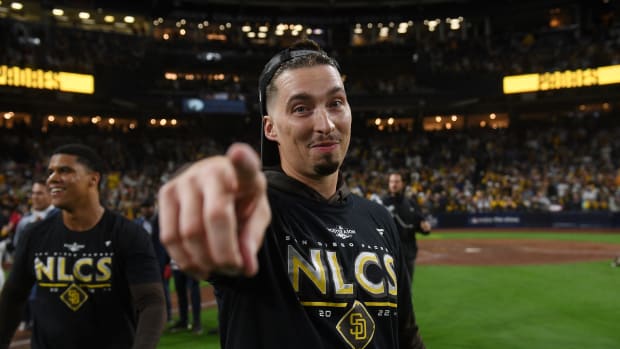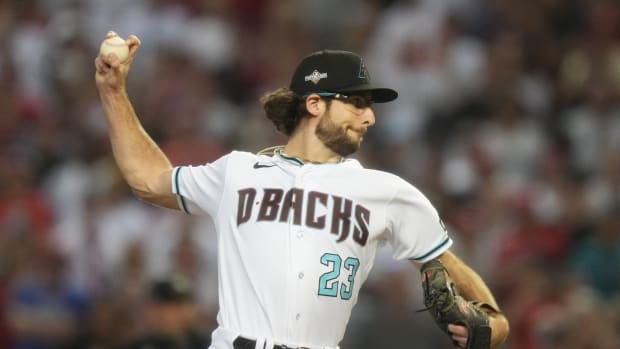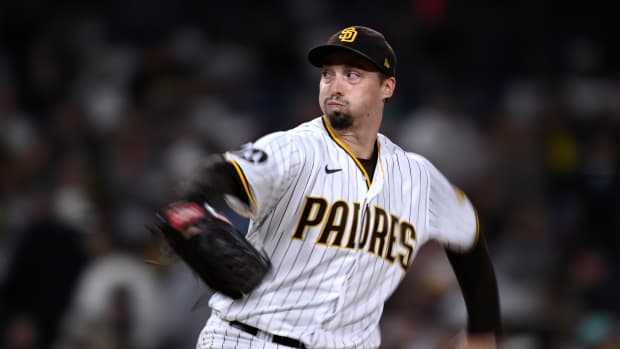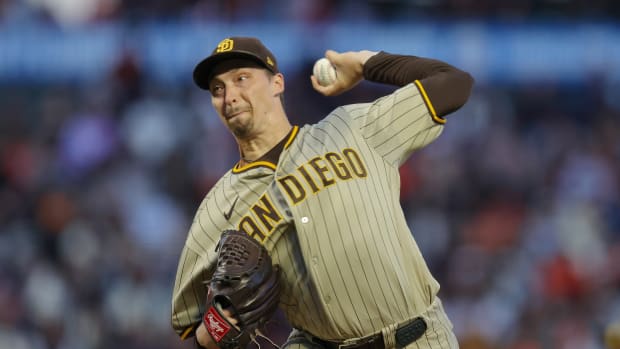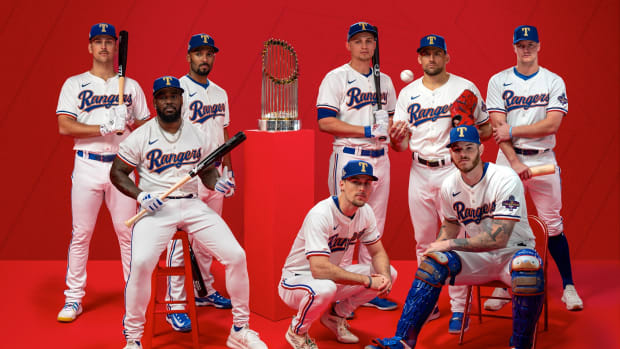Blending in the Crowd: Why All MLB Execs Have the Same Wardrobes
I have warned Nationals president of baseball operations and general manager Mike Rizzo that I want to talk about baseball executive fashion, so he is ready when I approach.
“I’m wearing my lucky jeans,” he says proudly.
This interview is off to a good start, I think. He’s wearing the pants he wore when he got the job running the Nationals in 2009, surely, or perhaps the ones he had on when they won the World Series in ’19. General managers really do think about their attire. This is a great story idea.
I’m a good journalist, so I follow up. “What makes them lucky?” I ask.
Rizzo looks confused. “That’s the name of the brand,” he says.
Well, Rizzo may not have given a great deal of thought to his wardrobe, but I have. I have been pestering him and his colleagues for nearly three years, trying to determine whether there is any connection between groupthink and groupdress. (It has reached the point that Rays president of baseball operations Erik Neander greets me by asking whether he looks O.K.)
I raise this issue because nearly all baseball executives dress almost identically: dark quarter-zip pullover sweater over light polo shirt—one of the two tends to be team-branded—atop technical pants posing as chinos and finished with dress sneakers. (Rizzo and Yankees GM Brian Cashman, the two longest-tenured executives, are among the only ones who seem to have earned the right to wear jeans.) In warmer weather, they sometimes swap the polo and quarter-zip for a button-down, often gingham. They stick to neutral colors, only occasionally going so far as to introduce red into the palette. Even the brands tend to be the same: Rhone, Mizzen and Main, Travis Mathew, Lululemon, the ubiquitous white-soled Cole Haan. As executives arrive in Nashville for the winter meetings this weekend, it will not matter if the airlines mix up their luggage.
Over the years, Rays employees in particular became so sartorially interchangeable, says Blue Jays VP of baseball strategy and former Rays assistant GM and Astros GM James Click, that “every day in the office, it seemed like two people would walk in and it would be like the Spiderman meme, where they’re pointing at each other. So they have pictures around the office of people arm-in-arm, head-to-toe [matching].”
I once saw Dodgers president of baseball operations—and former Rays GM—Andrew Friedman and Dodgers GM Brandon Gomes standing on the field for batting practice wearing the same blue-and-white gingham shirt, gray pants and dark dress sneakers. When I later mentioned it, they said they hadn’t noticed.
“I think when you become a GM, they issue you these quarter-zip pullover sweaters,” says Mets president of baseball operations David Stearns. “And then you just keep accumulating them over the term of your tenure, so that one day you wake up and you look in your closet and the only things in your closet are quarter-zip pullover sweaters. So yeah, I can’t deny that we all blend in.”
For many of them, that has been true their whole lives. Of the 39 top team executives—14 presidents of baseball operations, 24 general managers and one chief baseball officer—39 are men, 37 are white and 26 graduated from a top private institution, nine of those an Ivy League school. They’ve been wearing khakis for a long time.
“It speaks to a lack of diversity,” says Twins president of baseball operations Derek Falvey. “Let’s call it what it is. But I will say—even those who are not from the same background are similarly dressed!”
Some executives deflect responsibility for their wardrobe. Before the 2021 GM meetings—the first ones held in person since before the pandemic began—Neander realized that an embarrassing number of his clothes bore holes. He raced to Nordstrom on the way to the airport. “I need pants!” he told the salesperson, and handed over his credit card. So any resemblance to his peers, he assures me, is really Nordstrom’s fault. (He does however admit to replacing a worn-out pair of dress sneakers with the same model—on his own.)
“My clothes fall into three categories,” says Giants president of baseball operations Farhan Zaidi. “Stuff I got from the team, stuff my mom bought me and stuff my wife bought me.”

Zaidi has had successful stints as an executive with the A’s, Dodgers and Giants. But he’s yet to differentiate his style from that of his peers.
Mark J. Rebilas/USA TODAY Sports
They point to decision fatigue, to comfort, to frugality. (Team employees receive an extraordinary number of team polos for free.) The Mets tell staffers to “dress for your day,” meaning the athleisure look is nearly team policy. And some executives cite a tendency for people in any industry to fall into a uniform. “All scouts dress the same,” says Padres GM A.J. Preller. “All media guys dress the same. All strength coaches dress the same.”
Nearly every other executive points to two outliers: First is Phillies president of baseball operations Dave Dombrowski, whose elegant houndstooth blazers and pleated corduroys set him apart from his peers. He always appears to be on his way to dinner at Toots Shor’s.
Dombrowski professes not to have noticed a difference between him and his colleagues, but he graciously acknowledges, “As I’ve gotten older, I’ve gotten past that point of fitting in with the crowd.”
On the other end of the sartorial spectrum lives Preller, whose fashion icon seems to be Adam Sandler. The day in February 2019 that San Diego signed Manny Machado to a record $300 million, 10-year deal—the largest commitment in franchise history—Preller ambled around Peoria Sports Park in a pair of sweatpants whose crotch fell somewhere below his knees. For the occasion of Bob Melvin’s ’21 interview to become manager of the team, Preller wore “this freakin’ T-shirt from Japan,” he admits, and a pair of basketball shorts.
So it catches my attention when Preller shows up at this year’s general managers’ meetings in a collared shirt that fits him and a pair of chinos that almost do.
“If you go to the playoffs, you can wear hoops shorts,” says Preller. “If you go 82–80, you have to clean it up a little bit.”
He can find proof in the form of Diamondbacks GM Mike Hazen, who estimates his fashion sense ranks “in the bottom five” of baseball heads and who alternated between two pairs of pants during the team’s surprise World Series run. I ask him whether his limited wardrobe reflected a lack of confidence that his team would make it deep into the postseason. No, he explains: He is just the most superstitious of all the baseball heads. This isn’t the tale of a GM who didn’t believe in his team, he says. “It’s, ‘This doesn’t matter, and [I’m] an idiot.’”
Even he wore dress sneakers, though.
There is some hope for the future, if only because more brands are now offering technical pants. Women and people of color are slowly increasing in numbers across the industry, though Falvey is right that they may be assimilating—former Marlins GM Kim Ng wears almost exclusively quarter-zips. But look closely, and occasionally you will see a crewneck every now and again. Neander has even been spotted eschewing Cole Haan dress sneakers for an indistinguishable pair of Ecco dress sneakers.
Trends are changing. Luckily.































